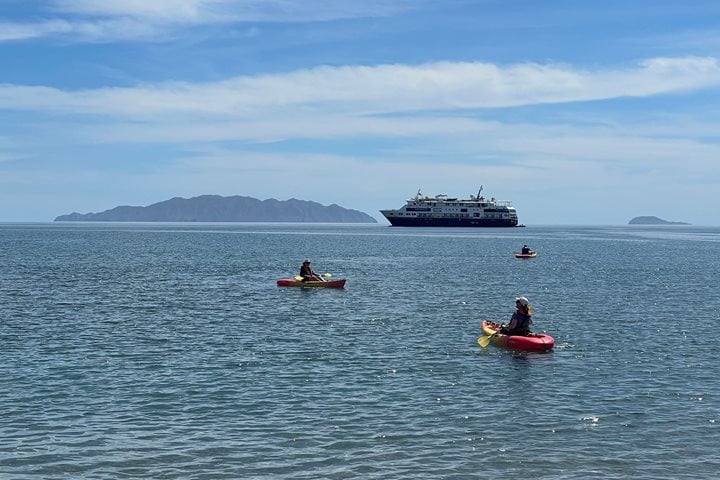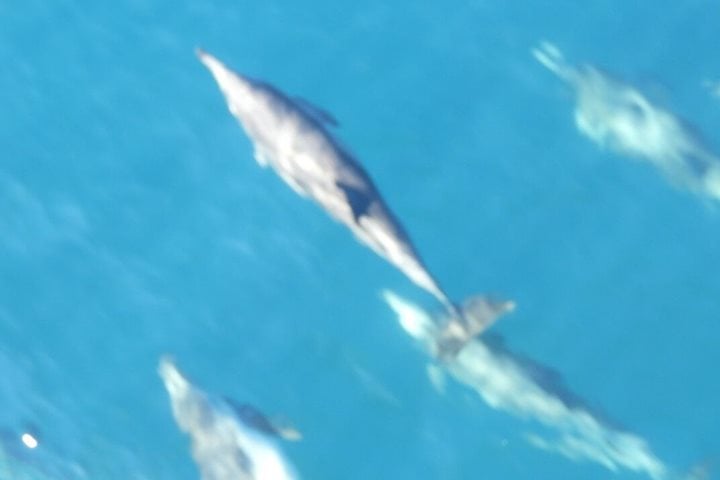The immensity and variety of this tremendous estuary starts to become apparent after we’ve spent our entire day traveling through it. Larger than San Francisco Bay, and the only deep water port on the west coast of the Baja California Peninsula, Mag Bay supports an incredible number of species. In the south, Bahia Almejas hosts a thriving fishery for chocolate clams, while everywhere the mangrove-lined channels offer nutrients and protection to millions of juvenile fish. Beautiful plumed herons and egrets make a living fishing along the edges of the channels while thousands of wintering shorebirds snack on the invertebrates tucked into the mudflats. Swimming crab, shrimp, and spiny lobster are other local seafood specialties from this rich bay.
Bow-riding bottlenose dolphins joined us in our progress north along the dunes of Isla Magdalena. Their sleek dark gray bodies deftly used the pressure wave of National Geographic Sea Bird to glide along. Occasionally they would roll over and look up at us as we all pressed north through the dark green plankton-rich waters.
In the beautiful late afternoon light, we reached the north end of the island, dropped the anchor and the boats for a landing ashore and a walk along this extraordinary world-class beach. Strings of double-crested cormorants filled the sky, and a small army of brown pelicans, terns, and gulls stood watch, perhaps like us—looking out to the breakers of Boca de Soledad or the “mouth of solitude” hoping to see the blows of California gray whales.
A bit later, while we enjoyed cocktails back at the ship, the incoming tide brought with it the gift of whale breath…and dreams of tomorrow’s encounters with these enormous gentle mammals.







